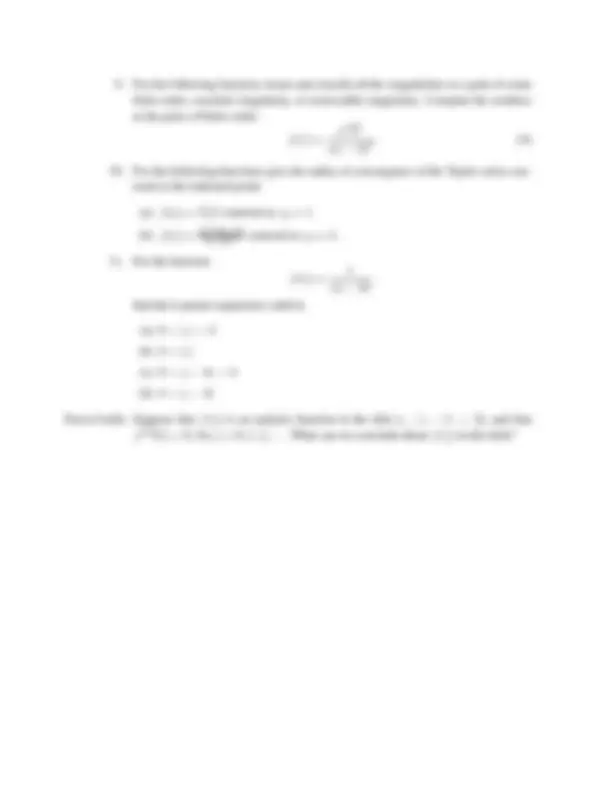



Study with the several resources on Docsity

Earn points by helping other students or get them with a premium plan


Prepare for your exams
Study with the several resources on Docsity

Earn points to download
Earn points by helping other students or get them with a premium plan
Community
Ask the community for help and clear up your study doubts
Discover the best universities in your country according to Docsity users
Free resources
Download our free guides on studying techniques, anxiety management strategies, and thesis advice from Docsity tutors
These are the notes of Exam of Complex Analysis and its key important points are: Families, Functions, Orthogonal, Indicated Sets, Interval, Inner Product, Orthogonal Families, Cylinder, Solution, Stationary
Typology: Exams
1 / 3

This page cannot be seen from the preview
Don't miss anything!


Name
(a) {sin( n π x ) : n = 1 , 2 ,... } on the interval [− 12 , 12 ]. (b) { e^2 ni π^ x^ : n = 1 , 2 , 3 ,... } on the interval [ 0 , 34 ]. Remember: for complex valued functions we use the inner product defined by
〈 f , g 〉 =
(^34) ∫
0
f ( x ) g ( x ) d x. (1)
(a) {sin( 2 n π x ) : n = 1 , 2 ,... } on the interval [ 0 , 12 ]. (b) {sin( 2 n π x ) sin( m π x ) : n = 1 , 2 , 3 ,... ; m = 1 , 2 , 3... } on the unit square [ 0 , 1 ] × [ 0 , 1 ].
∇^2 u = 0
in a cylinder described as the the region in three-space R^3 delimited by the surfaces
z = 0 , z = 1 , x^2 + y^2 = 4
assuming that:
(Write the integrals to compute the coefficients in the final series expansions without attempting to evaluate them).
(a) { z : z = ¯ z } (b) { z : Im z > (Re z )^2 }
(a)
n = 1
2 2 + i
) n
(b)
n = 1
n − i n + i
(a)
n = 1
n^4 zn
(b)
n = 1
zn ( n !)^2
| z |= 4
dz z^2 − 4
| z + 2 |= 1
dz z^2 − 4
| z |= 1
( 2 z^2 + 3 ¯ z ) dz. (3)